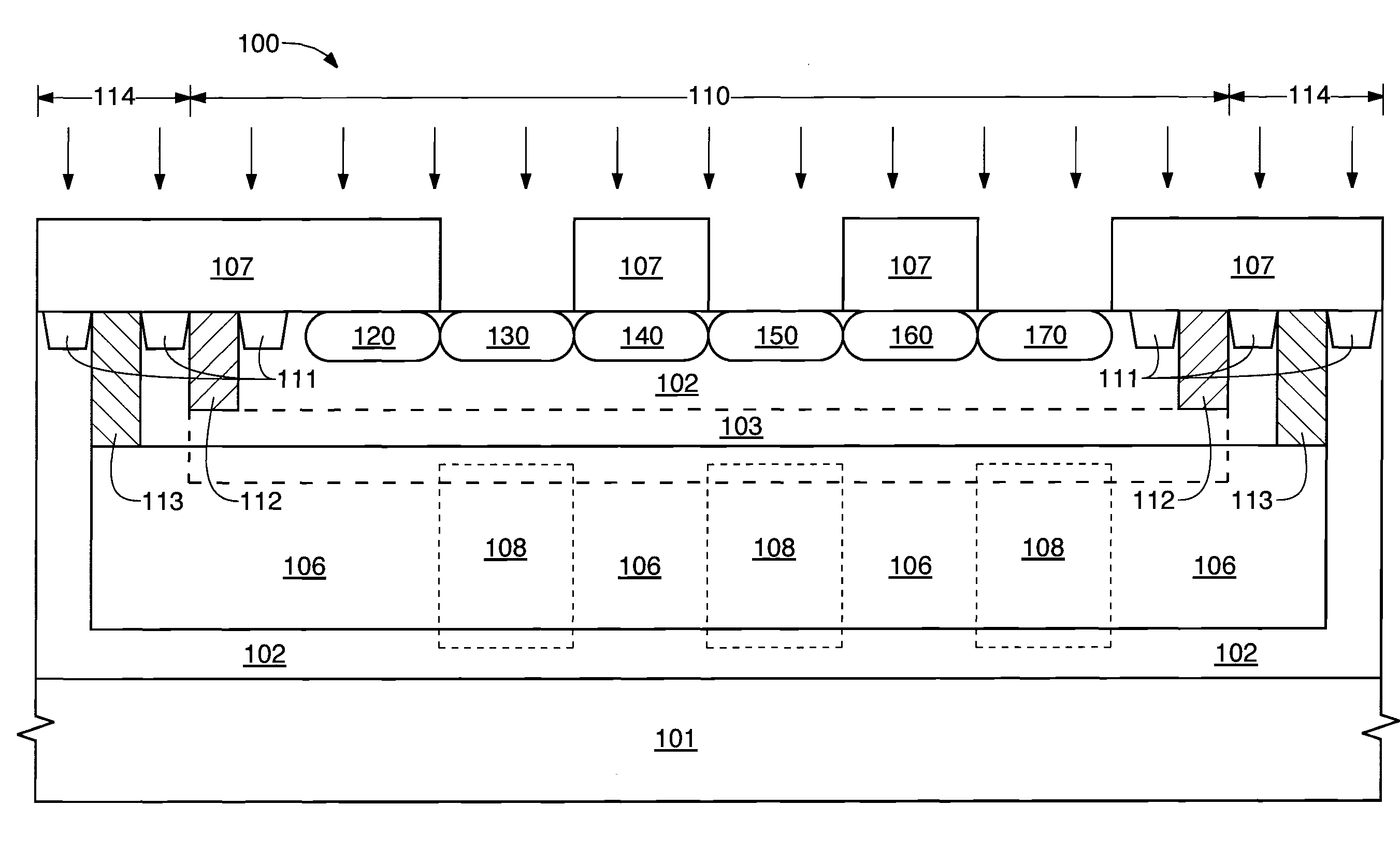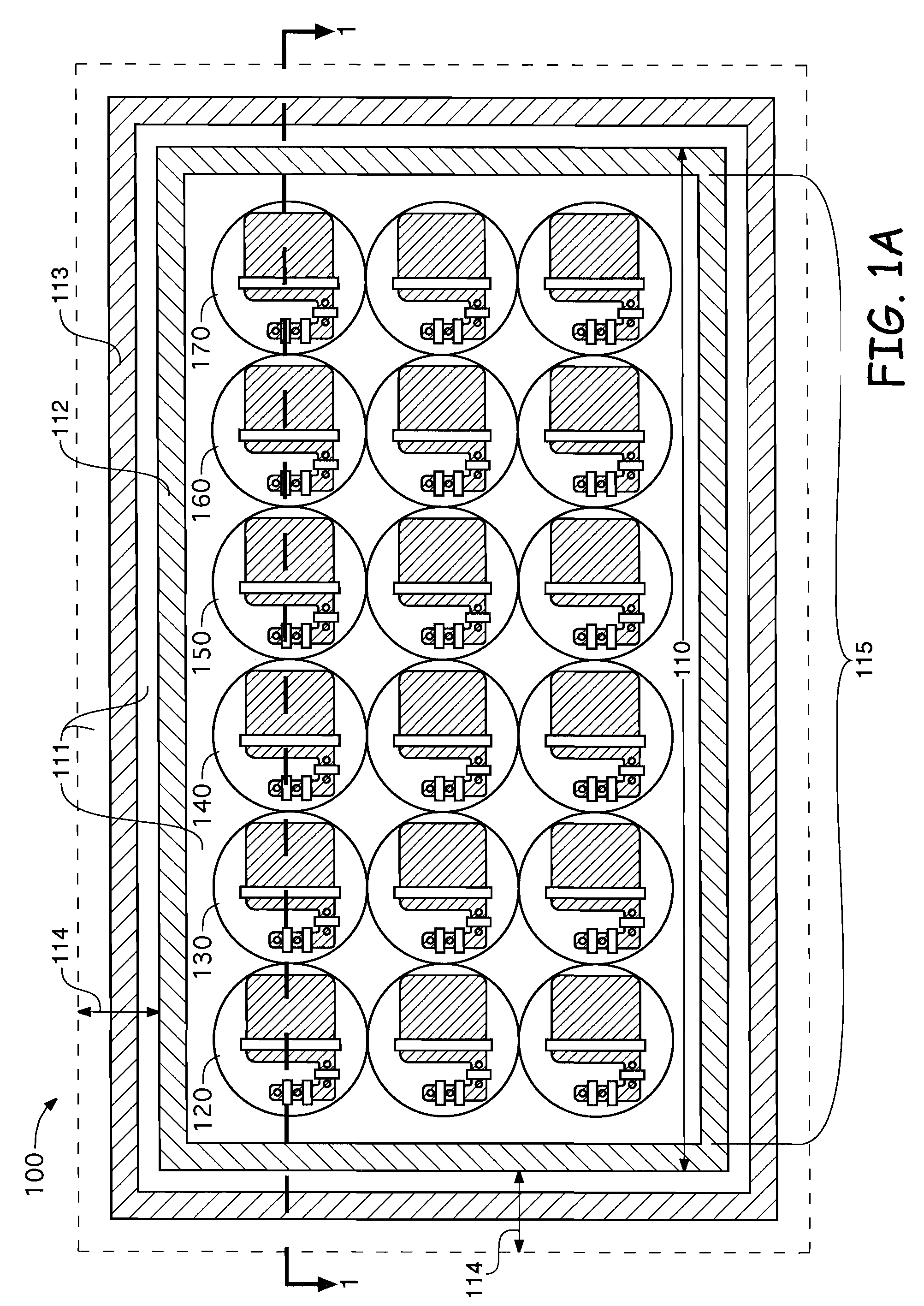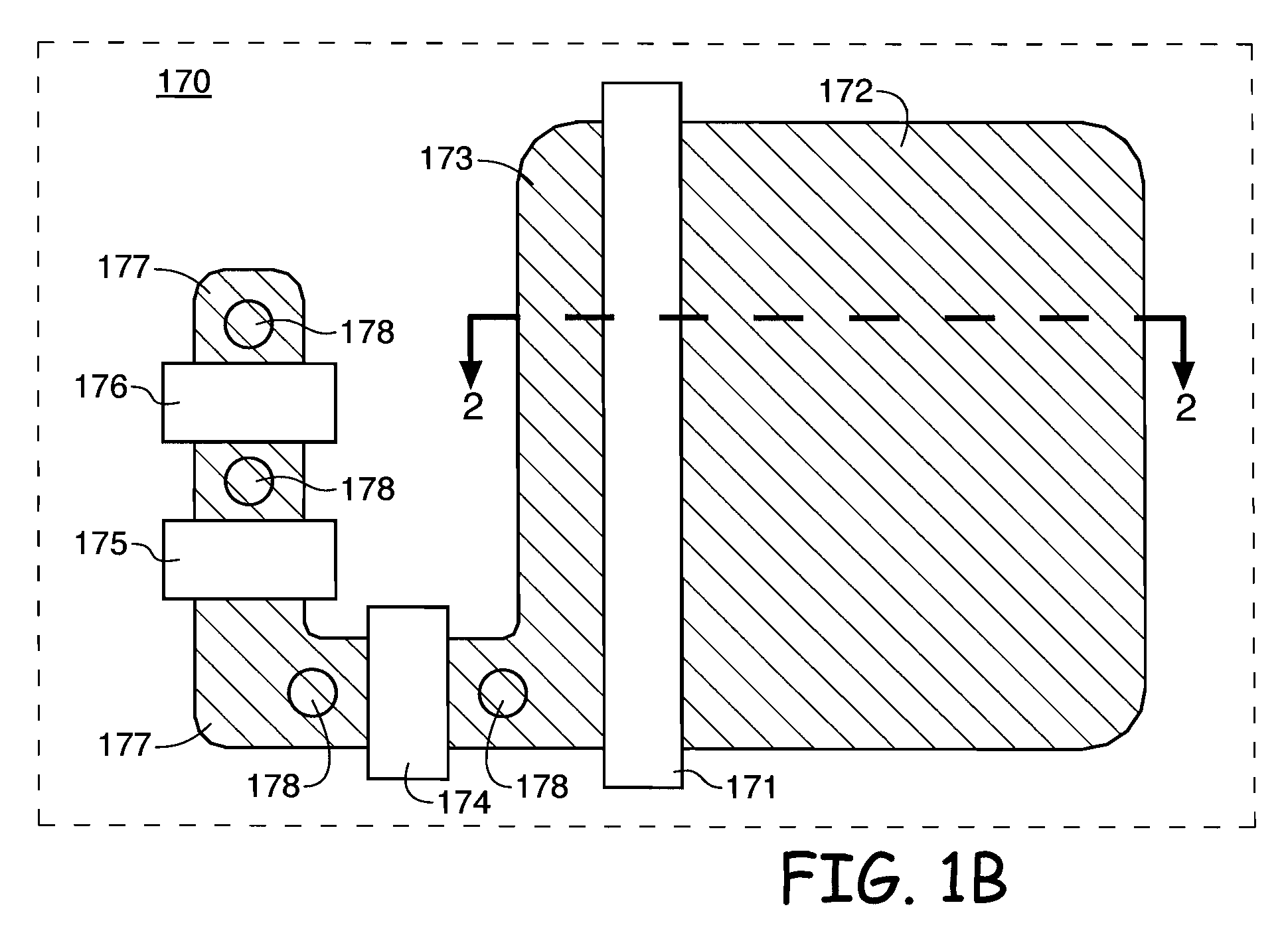Methods, structures and sytems for an image sensor device for improving quantum efficiency of red pixels
- Summary
- Abstract
- Description
- Claims
- Application Information
AI Technical Summary
Benefits of technology
Problems solved by technology
Method used
Image
Examples
first embodiment
[0023]A CMOS image sensor device in accordance with the present disclosure is fabricated as depicted in the cross-sectional views of FIG. 1C-1E, that correspond to the generally layout of top down view FIG. 1A and in accordance to the cross-sectional view taken along line 1-1 of FIG. 1A.
[0024]Referring now to FIG. 1C, CMOS image sensor 100 utilizes p-type substrate section 101. A p-type epitaxial material is grown in the course of epitaxial deposition and then patterned to form p-type epitaxial region 102 on p-type substrate 101 at a thickness of approximately 4 μm and doped to a p-type conductivity using, for example, boron at a concentration of approximately 7E14 atoms cm−1.
[0025]Next, field oxide regions 111, such as by using shallow trench isolation (STI) techniques know to one skilled in the art, are formed in p-type epitaxial region 102. For example field oxide regions 111 can be formed using a conventional STI process and are typically formed by etching a trench in the substr...
second embodiment
[0031]A CMOS image sensor device in accordance with the present disclosure is fabricated as depicted in the cross-sectional views of FIG. 2C-2D, that correspond to the generally layout of top down view FIG. 1A and in accordance to the cross-sectional view taken along line 1-1 of FIG. 1A.
[0032]Referring now to FIG. 2C, CMOS image sensor 200 utilizes an n-type substrate section 201. An n-type epitaxial material is grown in the course of epitaxial deposition and then patterned to form n-type epitaxial region 202 on n-type substrate 201 at a thickness of approximately 4 μm and doped to a n-type conductivity using for example 4 ohms−em at a concentration of approximately 1E15 atoms cm−3.
[0033]Next, field oxide regions 211, such as by using shallow trench isolation (STI) techniques know to one skilled in the art, are formed in n-type epitaxial region 202. For example field oxide regions 211 can be formed using a conventional STI process and are typically formed by etching a trench in the ...
PUM
 Login to View More
Login to View More Abstract
Description
Claims
Application Information
 Login to View More
Login to View More - R&D
- Intellectual Property
- Life Sciences
- Materials
- Tech Scout
- Unparalleled Data Quality
- Higher Quality Content
- 60% Fewer Hallucinations
Browse by: Latest US Patents, China's latest patents, Technical Efficacy Thesaurus, Application Domain, Technology Topic, Popular Technical Reports.
© 2025 PatSnap. All rights reserved.Legal|Privacy policy|Modern Slavery Act Transparency Statement|Sitemap|About US| Contact US: help@patsnap.com



